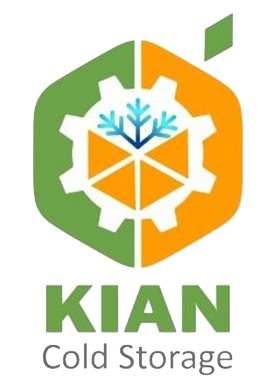The ultimate goal of HSE, which encompasses health, safety, and environmental concerns, is the preservation of human health and life. If we value our own health and that of our employees, then we strive to safeguard human lives to the maximum by adhering to the principles and rules of occupational health, safety, and environmental protection. Through education and cultural promotion of these aspects in the workplace, we aim to achieve a healthier life for all.
In today's industrial progress, with the integration of machinery, equipment, and systems into our daily lives and the increased prominence of tools and equipment in work processes, along with the heightened interaction of individuals with industrial environments, organizations are faced with new and ongoing challenges regarding health, safety, and hygiene. It is no longer sufficient to merely abide by old laws and obvious principles to prevent accidents and disasters.
Therefore, to protect and preserve the human workforce, which is the most crucial factor in the success of any organization, and in order to ensure the sustainability of the environment and prevent harm to equipment and facilities, the HSE strategy steps onto the scene. It provides a structured approach towards reducing risks and maximizing workplace health.
Over the past years, considerable efforts have been made to ensure safety in our workplace, and the issue of workforce health protection has been a top priority for us. In the implementation of the safety system, we have paid special attention to international standards, including ISO 45001. We have identified all our activities related to health and safety, and have formulated plans and measurements to control and improve them. The results of these measurements are reported to management through monitoring and reviewing performance and correcting observed non-conformities in audits.
Important steps taken in the field of health :
- Establishing communication with a physician for the periodic examination and control of staff, from the employer to contractors.
- Providing on-site facilities for temporary rest and recuperation of injured individuals with appropriate equipment.
- Periodic assessment of drinking water quality within the facility and strict supervision of food distribution and preparation.
- Carrying out periodic pest control operations, baiting, and insecticide spraying for the elimination of harmful pests and vermin.
- Conducting pre-employment examinations for personnel and contractors, as well as regular check-ups and monitoring of employee health.
- Performing checklist inspections of dining areas, buffets, kitchens, and rectifying any deficiencies.
- Regularly holding monthly meetings of the Health, Safety, and Hygiene Committee with the presence of a labor department representative.
- Implementing a daily short exercise program during working hours to ensure staff physical readiness.
- Inspecting, monitoring, and refurbishing the cleanliness of sanitary facilities, as well as controlling toilet liquid disposal.
- Regularly washing floors, hallways, workrooms, cleaning tables, and disinfecting handles.
- Procuring and installing waste bins in workplace areas for proper sorting of waste and monitoring disposal.
- Creating educational articles and posters on health-related topics, pollution control, and prevention.
- Installing and replenishing first aid kits and medicines, and reviewing the expiration dates of past-use medicines.
- Training staff on preparedness for rapid dispatch of injured personnel to the hospital in case of emergencies.
- Preventing environmental health pollution and collecting and disposing of recyclables, waste, and residues.
Key safety measures taken :
- Procuring and distributing personal protective equipment for all staff along with an instructional manual for proper use.
- Installing air conditioning and clean air circulation systems and replacing filters periodically to prevent smoke and dust.
- Implementing occupational safety and health care programs based on predetermined regular schedules.
- Periodically inspecting and recharging firefighting equipment and fire extinguisher capsules to ensure functionality.
- Daily visits to accident-prone areas to ensure compliance with guidelines and the presence of safety equipment.
- Conducting multiple classes to educate and remind employees, especially the crisis control team, about rules.
- . Recording and reporting every incident and maintaining statistics of accidents for severity, recurrence, and accident rate.
- Installing safety signs in various areas of the facility, warning signs, and informative signage.
- Establishing an emergency response team and conducting training maneuvers in safety and firefighting.
- Acknowledging and thanking exemplary personnel and adhering to safety issues in periodic ceremonies.
- Installing infographic posters and educational materials on safety to promote a safety culture.
- Securing premises, walkways, hallways, and other workspaces with safety signs and guides.
- Performing drills and periodic exercises to prepare personnel and increase self-confidence during emergencies.
- Reminding erring personnel to use personal protective equipment correctly and issuing verbal or monetary warnings.
- Installing safety labels in accident-prone areas and inspecting and controlling the safety of tools, equipment, and devices.
Significant environmental measures taken :
- Preparing and creating green spaces and using flowers, trees, and natural elements for beautification.
- Thoroughly caring for and maintaining the filters of the air conditioning system and replacing dust collection equipment.
- Continuously reporting the results of environmental pollutant measurements in the environment and workplace.
- Designing checklists for departmental visits to identify environmental hazards.
- Providing environmental education to visitors, trainees, and staff through environmental sessions.
- Striving to minimize waste of raw materials and produce less waste and reduce waste.
- Using computerized mechanisms and setting up automation to save on paper consumption.
- Conducting daily, weekly, and monthly environmental tours and addressing issues and problems.
- Annual measurement of parametric environmental factors, including gases and particulates.
- Guiding and collaborating with environmental inspection authorities through regular or ad hoc visits.
- . Installing informative posters on environmental protection in public places.
- Procuring and installing containers for collecting wet, dry, and recyclable waste, and ensuring regular disposal.
- Identifying authorized and qualified centers for the disposal of non-usable waste and its disposal
- . Installing small hazardous waste bins in sanitary services for waste segregation.
